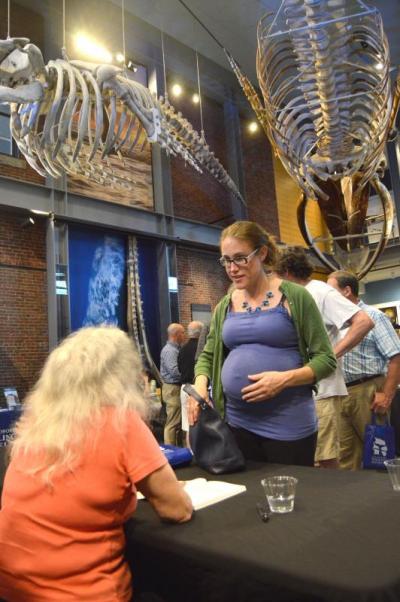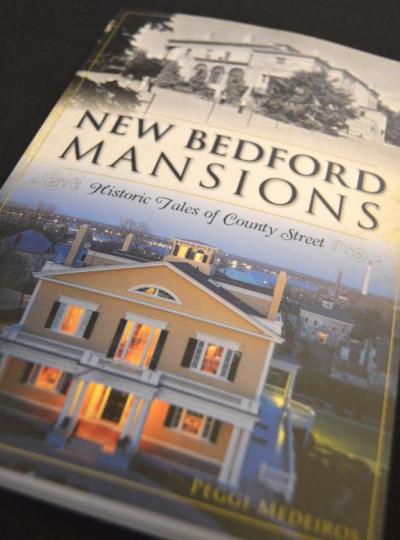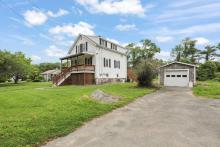Local historian details the past through mansions and their owners
When local historian and Dartmouth resident Peggi Medeiros set out to write her first book, she knew she didn’t want to tackle New Bedford’s whaling industry. She instead wanted to explore the lives of New Bedford’s citizens by way of their mansions.
“What I’m fascinated with is the families who built New Bedford and what motivated them, what they did with their money and the fact that this group of families drew extraordinary people to New Bedford,” said Medeiros.
Medeiros has worked as a historian with the City of New Bedford, the Waterfront Historic Area LeaguE (WHALE) and writes the “Our Southcoast Heritage” column for The Standard Times. Around Dartmouth, you might have seen her during a trip to the Akin House or other history-related events.
But much of her new book, “New Bedford Mansions: Historic Tales of County Street,” stems from her work in the late ‘70s with New Bedford’s Office of Historic Preservation. She said her role as the city’s research historian left her spoiled because she was assigned to work on houses she fell in love with.
“Over the years, there were specific families that I was researching where I could spend eight or nine months researching everything I could about the families and the period and the architecture,” she said, adding that the advent of the Internet enhanced the speed of her research.
In addition to the knowledge she procured in her time as a historian, she had access to diaries that helped inform her book. The diaries of the former homeowners detailed everything from the construction of their houses to shedding light on their personal lives. The chapters of the book highlight different prominent families of New Bedford.
Medeiros said she unearthed many things she hadn’t known about the lives of the homeowners. One of her favorites was a diary kept by Samuel Rodman Jr. from the early 19th century. She describes him as the last devoted Quaker in his family, and he watched his wife and children eventually leave to join the Episcopal Church. Before that happened, he was a devoted family man.
“The most wonderful thing about Samuel, I think, is that he absolutely adored and spoiled his children, which was not necessarily the way children were treated in the 19th century. For example, he wouldn’t allow a Christmas tree, but he buys them Christmas gifts and let’s them go to his brother’s house where there is a tree and dancing,” she said.
While not every mansion she writes about stands today, there are some that remain. This includes Samuel Rodman’s house, which is on the corner of County and Spring streets. She said the mansion is well maintained, too.
“What’s really sad are the houses we’ve lost,” said Medeiros. “The single most elaborate house ever built in New Bedford was the John Avery Parker mansion. It was considered one of the grandest Greek Revival mansions ever built. It was demolished around 1919.”
“When the workmen were called in to demolish it, they found a sign behind a mantelpiece that said ‘Whoever destroys this building, realize it was the best of its kind when it was built.’”
The book spans the late 1700s to around the time of the Civil War, but toward the end, it features a surprise cameo from Franklin Delano Roosevelt. Medeiros included a photograph of the young Roosevelt — she estimates he’s about 12 years old in the photo — during one of his visits to New Bedford. The building where the portrait was taken has since been demolished.
“His mother’s family was from Fairhaven. Roosevelt would come here for holidays to visit his grandfather,” said Medeiros. “When he was governor of New York, he wrote the introduction to Clifford Ashley’s ‘Book of Knots.’ He talked about being a young boy in Fairhaven, sitting and looking across the harbor at New Bedford.”
With her first book complete, Medeiros is already plotting a possible follow-up regarding more of the history of New Bedford’s citizenry.
















